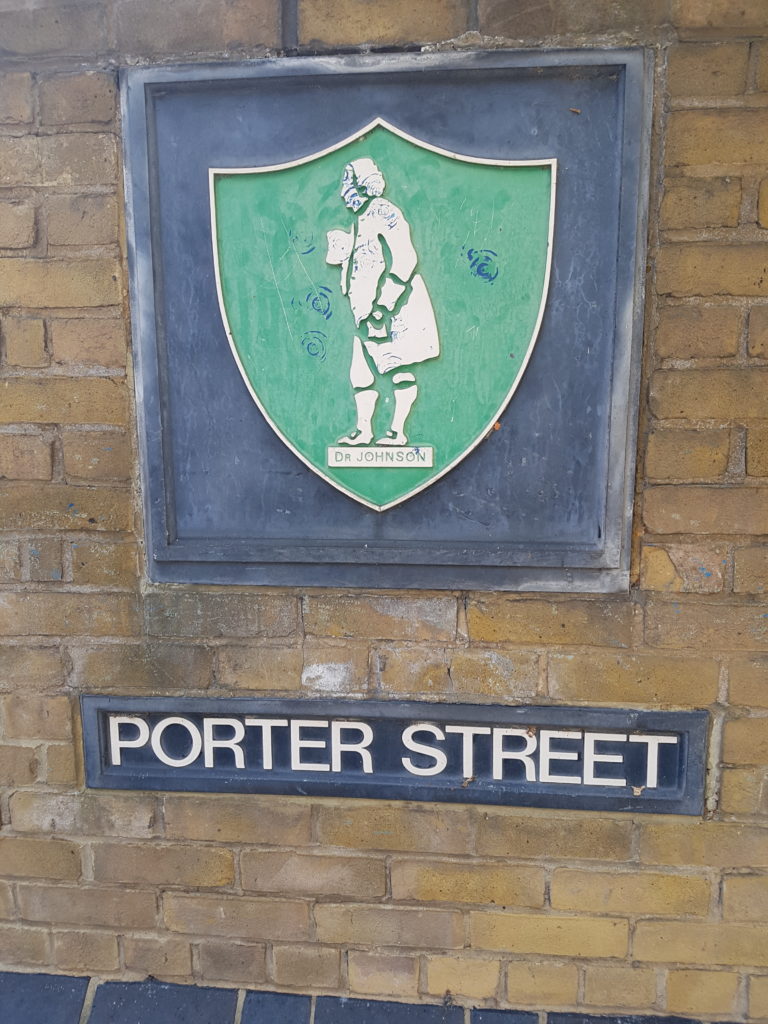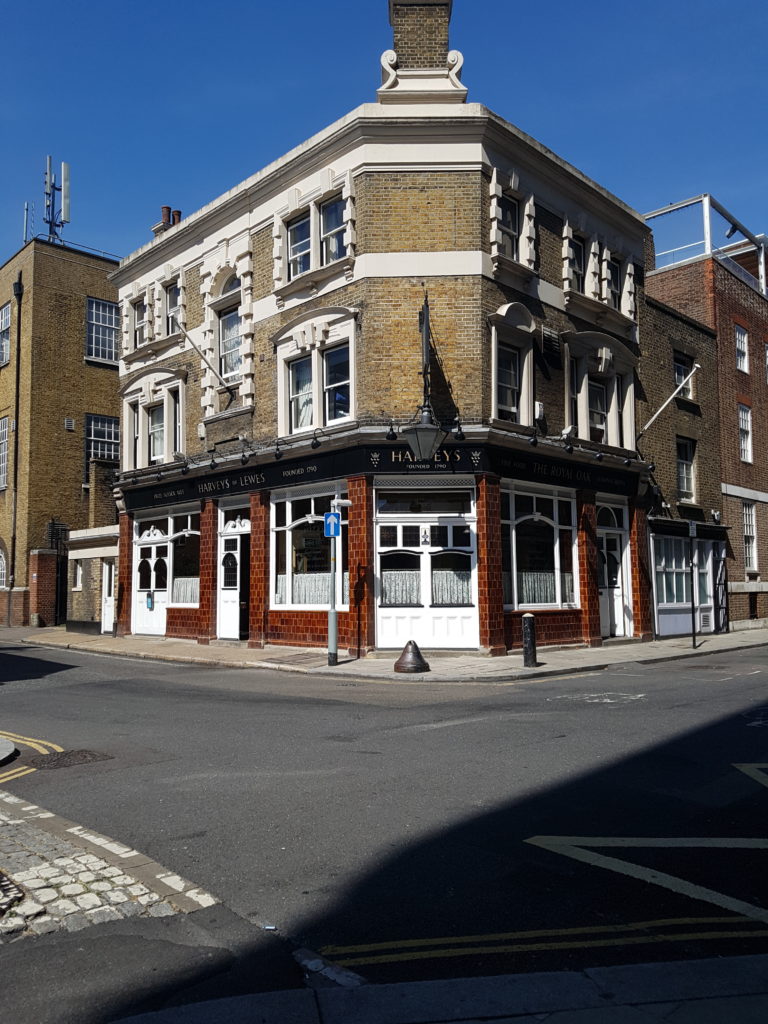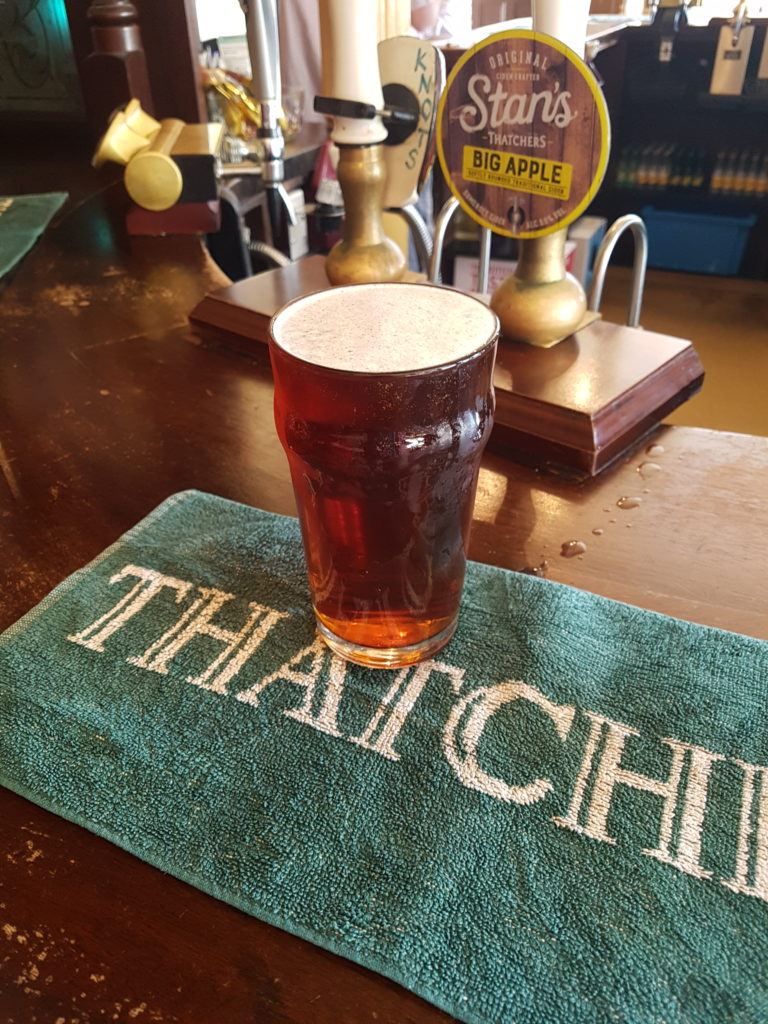Thumbing out of airplane mode somewhere between wheels down and passport control, I was surprised to learn that Barley Days, a perennially underperforming brewery from Picton, Ontario had decided to take up the Buck-A-Beer challenge. The main surprise would be the constraint that it seemed unlikely to be a profitable venture for a small brewery. I have popped my head into Barley Days a couple of times over the last few years and they’re just not large enough in terms of capacity to compete in the value brand segment.
I confess to a certain amount of frustration at the timing of all this as well. After all, I am on vacation, but spent a not insubstantial amount of time at the Great British Beer Festival declining requests for interview on the basis that I would rather be eating pork scratchings, supping a pint of Hobson’s Mild, and chatting to people.
It has turned out to be something of a busman’s holiday.
There are axes upon which brewing culture rests and they are simply the stuff of human society. Tradition and innovation might run along one axis. Profit and taxation along another. The Samuel Johnson quote “we are not here to sell a parcel of boilers and vats, but the potentiality of growing rich beyond the dream of avarice” is as relevant today as at the auction of the Anchor Brewery, just around the corner from my lodgings in Southwark. That was 1781. 237 years, but since the advent of large scale brewing the advancement is mostly technological.
I had a devil of a time finding the plaque near Maiden Lane. The advertisement for Courage on the side of a building off Winchester Walk was a recognizable landmark for me. The navigation of London is difficult at the best of times, with closes that do not seem geometrically possible within a block of a certain size and streets whose development seem the production of spinnerets rather than urban planning. It’s a geography which has been superimposed upon with layer after layer since time immemorial. Looking for the Anchor site, I find a plaque commemorating the discovery of a Roman warehouse dating to 100 AD.
I find myself thinking, passing under rail trestles by Monmouth Coffee (sorely needed after a sleepless red eye) that our situation in Ontario is constrained because we do not have these layers of culture upon which to depend. Consider that Upper Canada is founded 10 years after Samuel Johnson had auctioned Henry Thrale’s brewery. Certainly we have borrowed from England and from Germany and from America, but there is a resistance to the idea we could ever be our own thing. The problem with having been a colony dealing in raw materials is that you tend toward commoditization.
Dropping off my bags, I’m flicking through the twitter timeline on the #buckabeer hashtag. I see the argument “but I can go to Quebec and buy 60 cans at Costco for 60 dollars.” I see the argument that “I can buy a 12 pack in the states for 8 dollars.” Neither of these arguments seem willing to deal with the simple geographic detail that Ontario is neither Quebec nor the States. We have our own challenges and a set of existing variables that persist no matter how much beer costs at your all inclusive resort vacation. In short, problems of our own.
I am not against reform, incidentally. Privatization could have benefits. More options for retail would be good. I am wholly against, however, the destruction of value within the market. I do not want, for example, a foreign owned privatized chain to swan in with a load of capital and extract revenue from the province. Perhaps we’ll get convenience store and costco sales eventually. Whatever happens, some lead time is good.
This internal monologue, ongoing as I plod back through the market seeking to kill time until I am allowed to check in to my room makes me hyper aware of currency. Perhaps for the first time travelling as an adult I am just well heeled enough not to have to be. I’m headed to the Royal Oak in Tabard Street; a Harvey’s pub that I certainly couldn’t find without Google Maps. I am on my way to order a pint of Harvey’s Dark Mild that has been on my mind for a week. It’s a 3.0% ABV beer and costs £3.60. Approximately six dollars.
I’ve been up for 26 hours at this point and I’m the first customer, any thoughts of the impropriety of drinking before lunchtime soundly dismissed. The landlord is working the bar between administrative phone calls. The Royal Oak has been open for at least 40 years according to the plaque on the wall. I had been to the pub in winter sometime around 2008, when the dual sided Victorian bar seemed warm and snug. Today the saloon doors are open to the street. London, more than any city I have been in, is horrendously ill-equipped for a heat wave. The buildings are meant to trap warmth in. At the very least the high ceilings in the bar allow a gentle circulation.
“How the hell are you, Frank,” says the first of the day’s regulars. “Old and weary,” says Frank, limping slightly towards the cask engine as that ritual badinage continues.
As far as I’m concerned Cask Ales might as well be magic, rendering the barman a practically druidic figure. A cask of live beer is delivered to the pub cellar. It sits there finishing and clarifying for weeks. Once it is tapped, it will be good for about 72 hours. Although serving it colder might extend the lifespan, there’s no question of that happening because that’s simply not how it’s done. It will be served at cellar temperature. There are so many things that can go wrong, it seems perverse that something with this degree of difficulty should have been the preferred service method for so long. It’s also the only way British Ales work properly.
We get bottles and cans in the LCBO; mostly from larger regional English brewers like Shepherd Neame, Greene King, Robinson’s. They collapse in bottles and cans. It is practically as though their bodies have been elongated, stretched thin, and robbed of texture and structure. Harvey’s Sussex Best Bitter on the hand pull is all it should be. There’s the deep, nutty richness of Maris Otter and a touch of Crystal for sweetness and depth. The most recently developed hop variety in it is from 54 years ago; refreshing in a time when you’ve got to keep up with hops so new that they come encoded with numbers and letters. This contains actual bitterness and spicy barky greenery, a medicine for the monotony of late hopped citrus and pineapple craft ales. It is compact and dynamic, almost pulling you through a privet hedge. Not many cask bitters are this good. When it works, it’s incredible.
As regulars drift in, the topic of conversation is most frequently their latest operation. It’s an older crowd at lunchtime and I find myself reminded that beer is a generational thing. While there may be that axis of tradition and innovation upon which it plays out, the individual movers are limited by time. Here, however, is Frank behind the bar, serious minded and hyper focused on the task in front of him even while genial with the customers.
The cask ale crowd is aging and is represented by CAMRA. In April, they voted not to represent other types of beer. If you haven’t been to England, you might not know the depth of the lineup that exists in craft beer or the extent to which it has spread.
Taking up off Borough High Street in search of some lunch, I’m reminded of the coaching in trade by the place names. Queen’s Head Yard, Nag’s Head Yard. The former seemingly begat Harvard University. I stop in at The George Inn mostly to see what’s on the tap. They’ve Timothy Taylor Landlord but it hasn’t dropped as bright as I remember it, nearly murky in fact. Most interestingly, there are craft taps since my last visit in 2013. Beavertown is on. And there’s Modelo in the fridge. The ploughman’s lunch, however, is exactly what’s needed.
There’s a shifting tide in UK brewing. Over the course my first few days in London I get emails from CAMRA, all of which embargoed, with messaging around the Great British Beer Festival. One seems relevant to the #buckabeer hashtag I am scrolling through:
Majority of Britons find the price of a pint unaffordable
CAMRA’s National Chairman Jackie Parker said: “It’s no surprise that most people are finding pub pints unaffordable, given the tax burden they’re facing. Beer drinkers will naturally look to more cost-effective ways to enjoy a drink, such as buying from off-licences and supermarkets for home consumption.
“The result is incredibly detrimental to our local communities and to our own personal connectivity. Having a good local makes people happier, better-connected and more trusting. Furthermore, pubs help bring communities together and support the local economy. The reality is that there are very few places that can replicate the benefit provided by our nation’s pubs, and once they’re gone, they’re gone forever.”
The problems of brewing are universal even if the variables of an individual market are not. This is basically the same problem as buck-a-beer. More volume at a lower price. All I see on the hashtag is the desire for more product for less money. None of the people in favour of the idea seem even to specify a preferred brand, just that there should be more of it. The same mindset that sees people trampled at a Black Friday Walmart.
Price is certainly a real economic consideration, especially in the face of long term stagnation of wages. Value, on the other hand, is a product of culture. Waking from a fitful nap in the afternoon (the room sitting around 29 celsius since London does not really do air conditioning), I am heartened to see breweries rejecting the idea of buck-a-beer outright. I am glad to see so many people opposed to the destruction of value. Price versus value is a conversation that needs to occur and there needs to be education surrounding it. Perhaps this dust up will galvanize independent Ontario brewers to push things forward.
It comes down to this: You can get a can of cheap lager anywhere. You can get Frank Taylor to pull you a pint at The Royal Oak on Tabard Street.






Real Ale or Die Trying
Great stuff Jordan